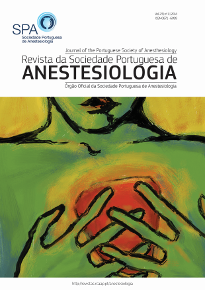Interactive software for preanesthesia evaluation developed in Portugal
DOI:
https://doi.org/10.25751/rspa.3676Keywords:
Algorithms, Anesthesia, Automatic Data Processing, Preoperative Care, Risk Assessment, SoftwareAbstract
Inadequate medical software is a major disadvantage for the anesthetist. Hospital’s software frequently lacks important topics, and are excessively detailed in others that we don’t need which shorten adherence to new technologies.
Data spread across multiple platforms and calligraphy harm information keeping and analysis. Anesthesia-related software is very expensive which pose limitations in the current economic situation.
The authors created an interactive form, in Portuguese, which automatically categorizes clinical data in a database.
The digital platform was developed in MSExcel® and implemented in 2010 with no costs to the hospital. It doesn’t need installation and is compatible with the hospital's standard software. The form includes multiple choice, predefined and free-text boxes. Real-time algorithms determine preoperative exams recommended (NICE guidelines), nausea and vomiting probability (Apfel) and surgical cardiovascular risk (ESC guidelines). The output can be a digital or paper report.
The authors believe this software contributed towards assessment uniformity, omission avoidance, better data management and communication with other physicians. It can be an educational and statistical resource and help provide a better service to the population. The authors are convinced that software developed by anesthesiologists can be better adjusted to their needs.
The Portuguese version is available for free download at http://www.anestesia.pt. This intends to stimulate creativity towards development of data management systems adapted to anesthesia practice.
Downloads
Downloads
How to Cite
Issue
Section
License
Articles are freely available to be read, downloaded and shared from the time of publication.
The RSPA reserves the right to commercialize the article as an integral part of the journal (in the preparation of reprints, for example). The author should accompany the submission letter with a declaration of copyright transfer for commercial purposes.
Articles are published under the terms of the Creative Commons Attribution Non-Commercial License (CC BY-NC).
After publication in RSPA, authors are allowed to make their articles available in repositories of their home institutions, as long as they always mention where they were published.


